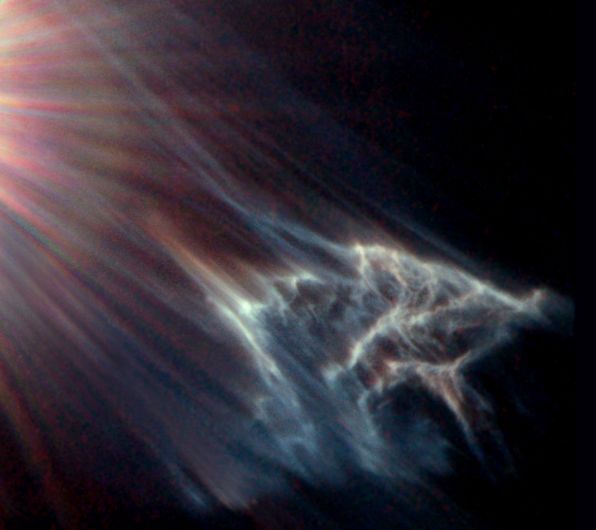Reflecting Merope

Explanation:
In the well known
Pleiades
star cluster,
a star's light is slowly destroying this wandering cloud of gas and
dust.
Above, the star
Merope lies just off the upper left edge
of
this picture
from the
Hubble Space Telescope.
The cloud, known as
IC 349,
and the star have been in existence for millions of years.
In the past 100,000 years, however, part of the
cloud has by chance moved so close to the star -
only 3,500 times the Earth-Sun distance -
that the starlight itself is having a very
dramatic effect.
Pressure of the star's light significantly repels the dust in the
reflection nebula
with smaller dust particles being repelled more strongly.
Eventually parts of the dust cloud have become
stratified and point toward
Merope,
with the closest particles being the most
massive and so the least affected by the
radiation pressure.
A longer-term result will be the
general destruction of the dust by the
energetic starlight.
Authors & editors:
Robert Nemiroff
(MTU) &
Jerry Bonnell
(USRA)
NASA Web Site Statements, Warnings,
and Disclaimers
NASA Official: Jay Norris.
Specific
rights apply.
A service of:
LHEA at
NASA /
GSFC
& Michigan Tech. U.

